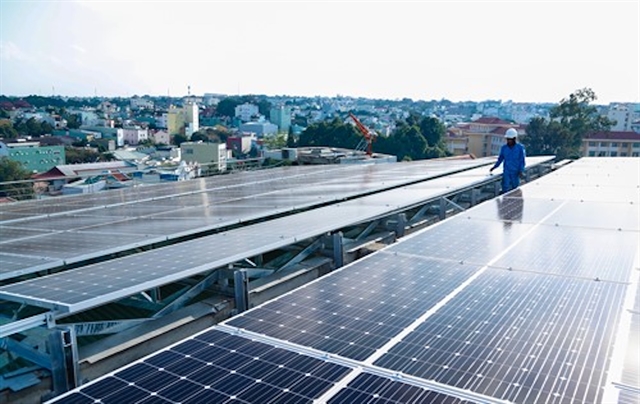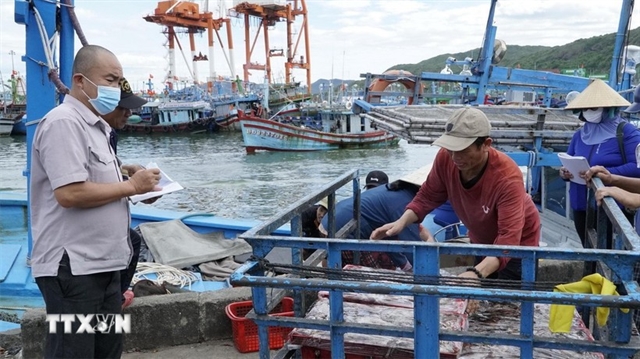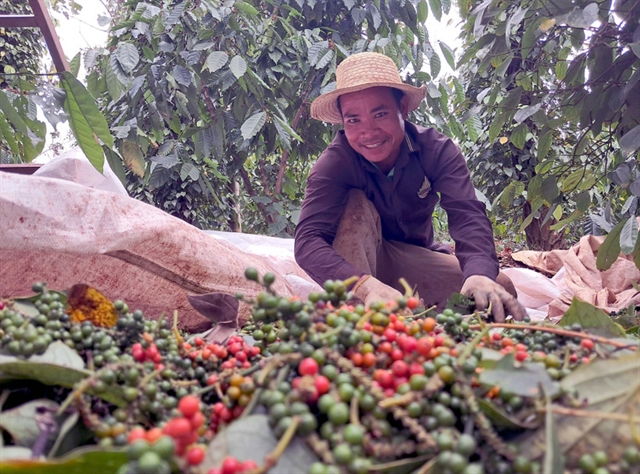 Society
Society
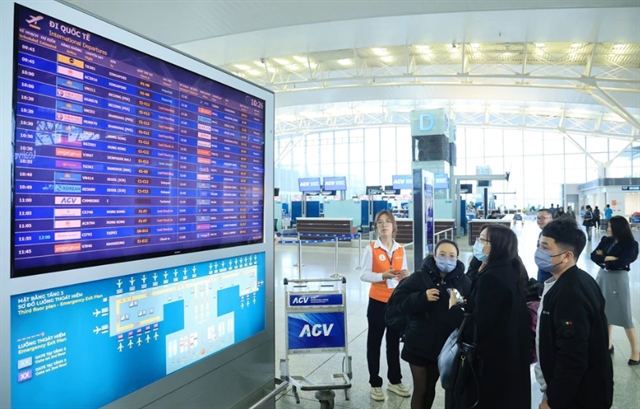
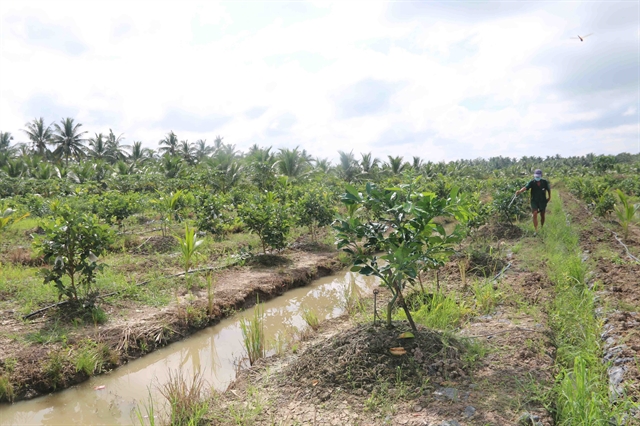
|
| An orchard growing guava and green skin and pink flesh grapefruit in Trà Vinh Province’s Tiểu Cần District. It used to be an unproductive rice field. – VNA/VNS Photo Thanh Hoà |
TRÀ VINH – The Cửu Long (Mekong) Delta province of Trà Vinh is speeding up restructure of agriculture to suit local conditions, adapt to climate change and meet market requirements.
It is rolling out incentives related to agriculture and rural development to attract investment and increase linkages between stakeholders in production and consumption.
It has earmarked VNĐ390 billion (US$17 million) for implementing the policies in 2021- 25, with a focus on helping farmers renovate fruit and coconut orchards and switch to other high-value crops on unproductive orchards and rice fields.
It is also helping them adopt Vietnamese good agricultural practices (VietGAP) standards, encouraging them to join co-operatives to access support policies easily and persuading localities to establish concentrated farming areas and develop hi- tech and organic agriculture.
The province Department of Agriculture and Rural Development (DARD) is working to create demand for farmers’ produce through trade promotion and building brand names for agricultural products.
It will help agriculture co-operatives sell their products on e-commerce platforms.
In Càng Long, Cầu Kè and Tiều Cần districts and a part of Châu Thành and Trà Cú districts, DARD is encouraging farmers to grow speciality fruits and coconut on a large scale.
In Cầu Ngang and Trà Cú districts, a part of Duyên Hải and Châu Thành districts and Trà Vinh City, farmers are encouraged to grow other crops or practise aquaculture in unproductive rice fields.
Kiên Thỏ in Châu Thành District’s Hoà Lợi Commune has a 2,000sq.m rice field where he switched to Chinese chives in 2016, and received VNĐ12 million ($520) from the ‘Adaptation in the Mekong Delta’ project in Trà Vinh to invest in a spray irrigation system.
He earns VNĐ65 - 85 million ($2,800 -3,700) per 1,000sq.m a year, many times the income from rice, he said.
Nguyễn Mạnh Thái, head of the Châu Thành District Plant Protection and Cultivation Station, said: “Most rice farmers attain high efficiency after switching to other crops.”
But the province still has large swathes of unproductive rice fields with farmers reluctant to switch to other crops because of a fear they would lack steady outlets and the need to learn new farming techniques, he said.
Speciality fruits
The province is helping farmers improve the quality and yields of speciality fruits like green skin and pink flesh grapefruit, sweet mandarin, king orange, and mangosteen.
DARD and the Department of Science and Technology are teaching farmers how to grow off-season fruits and use VietGAP and organic farming standards.
The province aims to apply GlobalGAP and Japanese Agricultural Standard (JAS) on more fruit growing areas to meet the requirements of export markets.
DARD is zoning concentrated speciality fruit growing areas to make it easier for farmers to apply advanced techniques to reduce costs and improve quality.
The province has 18,000ha under fruits, with speciality fruits accounting for more than 40 per cent of the area.
Phạm Minh Truyền, director of DARD, said the fruit growing area is large but yields are not high because most farmers use traditional methods and lack the advanced techniques needed to produce high-quality fruits.
They also lack linkages between themselves and with companies and so often end up with low prices when they have a bumper harvest, he said.
Trần Văn Út Tám, deputy director of the Department of Science and Technology, said to achieve high values and to export speciality fruits, farmers should use bio-technology and high-quality seedlings to produce high-quality fruits.
When they grow quality speciality fruits, farmers could build brand names, acquire geographical indication and ensure origin traceability, and link up with companies to sell their produce and export, he said. – VNS

.jpg)
